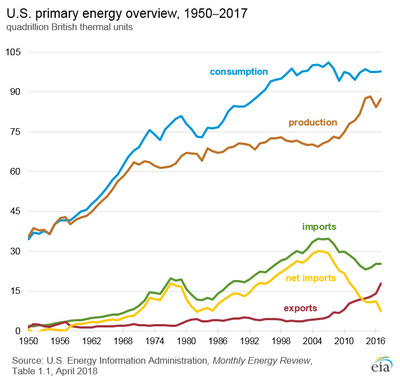Energy Basics and History
What is Energy?
- Radiant Energy (light)
- Kinetic Energy (motion)
- Thermal Energy
- Electrical
- Nuclear
- Chemical
- Gravitational
Energy Measurement Units
The study of energy is a complex topic, involving several different properties related to energy. Some of those properties include:
- length, width, height
- area
- volume
- weight
- mass
- force
- energy
The volume units used for liquid fuels are barrels or gallons. Natural gas us measured in cubic feet. Coal is measured in tons. Electricity is measured in kilowatthours.
Energy Comparison Units
It is often desirable to compare the energy content of different fuels - e.g. coal vs natural gas. That comparison requires conversion of the units used to measure each fuel into a common unit. In the U.S. the most frequently used unit for comparing fuel energies is the British Thermal Unit (Btu), which is a measure of the heat content of energy sources.
Btu Definition
A Btu is defined as the amount of heat required to raise the temperature of one pound of liquid water by 1 degree Fahrenheit. The starting water temperature is that at which water has its greatest density (approx 39 degrees F).
For more detailed information on the Btu and its equivalent in other energy units, click here
Renewable vs Non-Renewable Energy Sources
In the study of climate, energy sources are often classified as either renewable or non-renewable. Non-renewable energy sources are energy sources that deplete with use over time. These include fossil fuels (coal, oil, gas) and nuclear fuels (uranium). Non-renewable sources are presently where the world derives most of its energy. Renewable source supplies do not run out. These include solar, wind, geothermal, hydroelectric, and biomass.
For more information on renewable and non-renewable energy sources, particularly in regard to sustainability, click here
